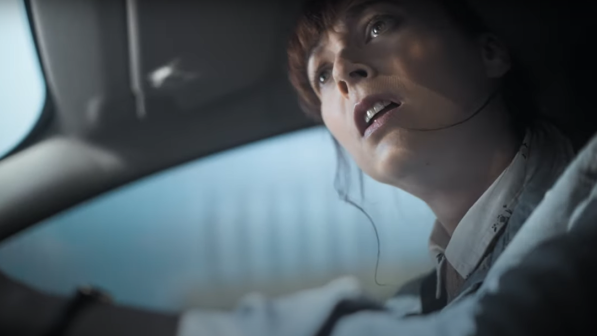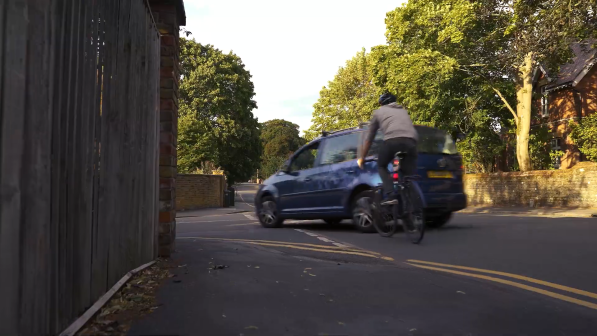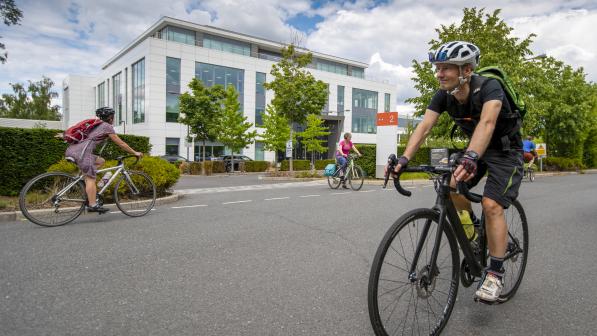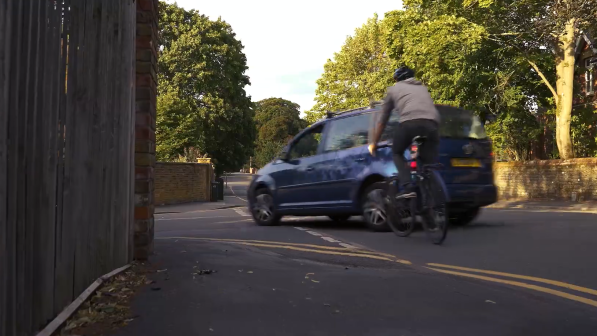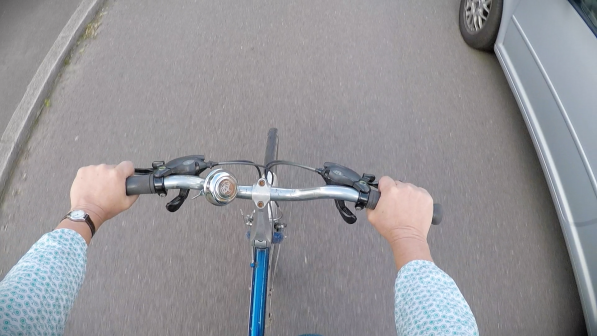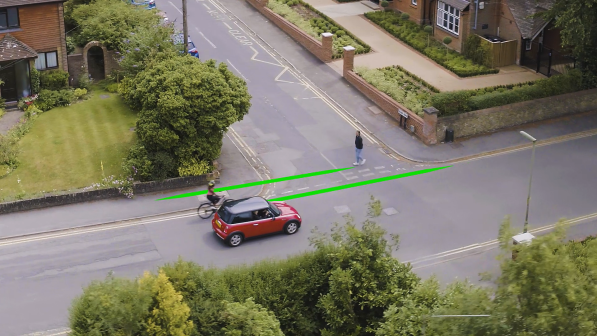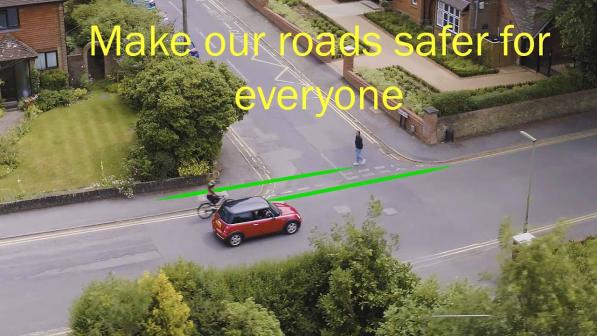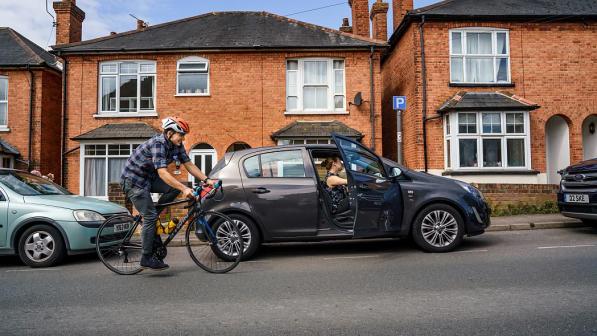Why we need a hierarchy of responsibility in the Highway Code

We’re often told that everyone is responsible for each other on the roads, but should that responsibility be shared equally, or should those who might cause the greatest harm to others bear greater responsibility?
As I explained in last week’s article about what you can do to improve the Highway Code, the Department for Transport (DfT) is currently consulting on proposed amendments to the Highway Code to improve safety for cyclists, pedestrians and horse riders. There’s a separate code in Northern Ireland, so this is a GB-wide rather than a UK consultation.
Support changes to make the Highway Code safer
We’ve already outlined ten key changes to the new draft Highway Code, and answered some frequently asked questions about why amending it is important and how you can support our campaign to help make sure this happens.
As promised, however, we’re now going to look a bit closer at some of the most important changes, starting in this article right at the beginning, with rule one of the Highway Code and the idea of a ‘hierarchy of responsibility’.
Hierarchy of responsibility – or road users?
By way of background, I wrote last year about how we don’t have a culture or a Highway Code that adequately protects the most vulnerable. People’s vulnerability ends up being defined by their own travel choices, with endless ‘share the road’ messages implying that everyone is or should be equally responsible for the safety of others. My argument was that instead of striving for balance between all road users, we should think about which road users present the greatest risk to others: surely, they should bear the greatest responsibility?

Fortunately, ever since the DfT announced in November 2018 the plan to review the Highway Code, it’s been speaking to various stakeholders about the exact proposals to include within the consultation that was finally launched last week, with Cycling UK's Roger Geffen, Joe Irving (former CEO of Living Streets) and highway design expert Phil Jones feeding into that process for over a year. That’s led to the inclusion of a proposal for a new rule 1, introducing what active travel groups had been calling a ‘hierarchy of responsibility’, but which the DfT has referred to as a ‘hierarchy of road users’ in the draft Highway Code.
Linking risk to responsibility
This rule puts road users most at risk in the event of a collision at the top of the hierarchy. That’s pedestrians, in particular children, older adults and disabled people. Cyclists and horse riders are next, followed by motorcyclists. It wouldn’t remove the need for all users to behave responsibly or give priority to pedestrians and cyclists in every situation, but it would ensure that their needs are considered first.
It would mean that people in charge of the largest vehicles, with the potential to cause the most harm in a collision, would bear the greatest responsibility to take care and reduce the danger they pose to others. So, a lorry driver would have a greater responsibility to someone driving a car or motorcycle, and likewise people cycling would have a greater responsibility than pedestrians.
Cycling UK prefer the phrase ‘hierarchy of responsibility’, because it focuses on responsibility rather than importance, whereas a ‘hierarchy of users’ rather implies that one road user is more important than another. We’ll therefore be suggesting to the DfT that it should refer to and promote this rule change as a ‘hierarchy of responsibility’ rather than ‘users’, but we nevertheless support the rule change because, whatever it’s called, it would establish the principle that road users who present the greatest risk to others should bear greater responsibility.
Degrees of responsibility – not no responsibility
We’re expecting some people to object to this proposal, on the basis that everyone should have regard for their own and other road users’ safety. But the new rule wouldn’t change that; it would, however, make it clear that someone cycling to work or to school had a greater responsibility to an elderly pedestrian crossing the road, and that the driver of a HGV had a greater responsibility to all of them, because a moment’s inattention by the latter has far greater consequences. Given the potential for this proposal to be misunderstood or misquoted, I’ve set out the full text of the proposed new rule:
“It is important that ALL road users are aware of The Highway Code, are considerate to other road users and understand their responsibility for the safety of others.
Everyone suffers when road collisions occur, whether they are physically injured or not. But those in charge of vehicles that can cause the greatest harm in the event of a collision bear the greatest responsibility to take care and reduce the danger they pose to others. This principle applies most strongly to drivers of large goods and passenger vehicles, followed by vans/minibuses, cars/taxis and motorcycles.
Cyclists, horse riders and horse drawn vehicles likewise have a responsibility to reduce danger to pedestrians.
Always remember that the people you encounter may have impaired sight, hearing or mobility, and may not be able to see or hear you.
None of this detracts from the responsibility of all road users, including pedestrians, cyclists and horse riders, to have regard for their own and other road users’ safety.”
A cultural change
There are many proposed changes to the Highway Code which involve important amendments to the wording of existing rules, but the new rule 1 would be a cultural change to the whole Highway Code.

Linking the degree of responsibility to the risk presented to others is a step towards thinking about road danger reduction, rather than more traditional road safety messages which too often start with individual responsibility to keep yourself safe, rather than the responsibility of others not to harm you.
For the avoidance of doubt, the rule change doesn’t remove that individual responsibility, it just places greater responsibility on those who can cause the greatest harm, and why wouldn’t you want that?
How you can support this change
Cycling UK will be sending a detailed response to the consultation, and some of you might want to complete the entire online questionnaire responding to particular proposals (it’s a long form, however, and not a quick and easy process).
But we also need to get a large number of people supporting some key changes to the Highway Code, including the introduction of a hierarchy of responsibility, so we’ve made that really easy with this online action.
You can use it to email the DfT in support of some key proposals, adding a couple of your own from a drop-down list, and editing the template email with more information if you wish.
Support changes to make the Highway Code safer
You can do it in minutes, so please help us get these changes through.
